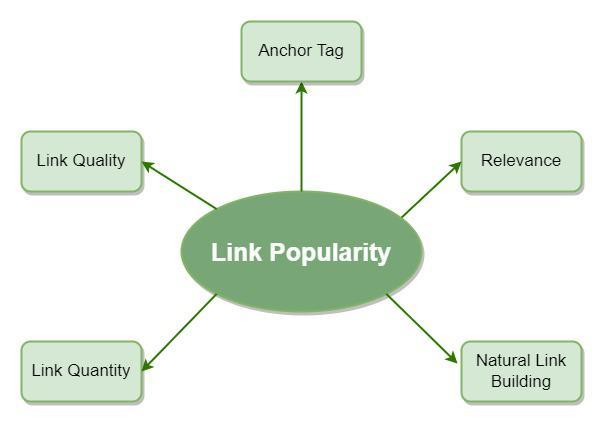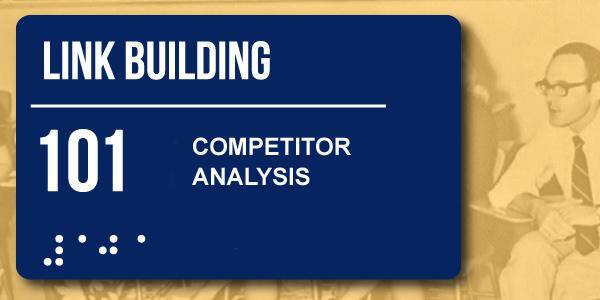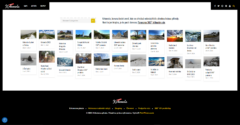In the vast and ever-evolving landscape of the internet, where millions of voices vie for attention, the concept of link popularity emerges as a glowing beacon guiding websites through the digital fog. But what exactly is link popularity,and why has it become a linchpin in the quest for online visibility? as the web matures,the importance of a well-connected online presence cannot be overstated. This article embarks on a journey to explore the intricate tapestry of link popularity, unraveling how it influences search engine rankings, drives traffic, and enhances credibility. Join us as we delve into strategies, best practices, and the transformative power of links, revealing how mastering this essential element can elevate your digital footprint and unlock the door to unparalleled visibility in the crowded online marketplace.
Table of Contents
- Understanding Link Popularity and Its Impact on SEO
- Strategies for Building a Strong Link Profile
- Analyzing Competitor Links for Enhanced Visibility
- Tools and Techniques for Measuring Link Effectiveness
- Q&A
- In Summary

Understanding Link Popularity and Its Impact on SEO
Link popularity refers to the number and quality of hyperlinks pointing to a website, which greatly influences its visibility in search engines. When other reputable sites link back to your content, it signals credibility and relevance to search engines like Google. This popular metric plays a critical role in determining a website’s ranking in search engine results pages (SERPs). Factors contributing to link popularity include:
- Quality of Links: High-quality links from authoritative and relevant sites can have a more notable impact than numerous lower-quality links.
- Diversity of Links: A varied mix of backlinks from different domains is often more beneficial than having multiple links from the same source.
- Anchor Text: The clickable text of a link can influence rankings and keyword relevance.
Understanding the nuances of link popularity enables businesses and content creators to formulate effective SEO strategies. Regularly monitoring and analyzing your link profile is essential for identifying strengths and weaknesses in your backlink strategy. Below is a simple overview comparing different types of backlinks and their potential impact on SEO:
| Type of Link | Impact on SEO |
|---|---|
| DoFollow Links | Passes link juice and contributes to ranking improvements. |
| NoFollow Links | Doesn’t pass link juice but can still drive traffic and create brand awareness. |
| Manipulative Links | May lead to penalties from search engines if detected. |
Strategies for Building a Strong Link Profile
When it comes to crafting a robust link profile, a strategic approach is essential. Focus on building relationships within your industry first. Start by engaging with key players, whether they are fellow bloggers, influencers, or businesses. This could involve sharing their content, contributing guest posts, or collaborating on projects. These partnerships not only foster goodwill but can also lead to valuable backlinks. Additionally, diversify your link sources to include various types of websites, such as educational institutions, non-profits, and industry-relevant blogs. This kind of diversity can enhance your credibility and improve your search visibility.
Moreover,high-quality content is your best ally in attracting natural links. Invest time in creating engaging resources that people want to share,such as infographics,research studies,or how-to guides. promote your content through social media and online communities to ensure maximum exposure. An effective way to evaluate your link-building strategy is through regular monitoring. Use tools that can help you analyze link quality and verify that they are contributing positively to your site’s authority. Consider maintaining a tracking table to keep tabs on your tactics:
| Link Type | Source | Engagement Level |
|---|---|---|
| Guest Post | Industry Blog | High |
| Mentions | Social Media | Medium |
| Resource Links | Educational Sites | High |
| News Article | online Magazine | low |

Analyzing Competitor Links for Enhanced Visibility
To truly enhance your online visibility, it is essential to delve deep into the links that competitors have established. These links do not merely serve as a metric of authority but represent a network of connections that can inform your own SEO strategy. By analyzing these backlinks, you can uncover valuable insights about your niche, such as:
- Quality of Links: Determine the authority of the sites linking to competitors. High-quality links can greatly influence search engine rankings.
- Diversity of Sources: Identify the variety in the sources of backlinks; a diversified link profile tends to be more robust.
- Anchor Text Utilization: Notice the keywords used in anchor texts which can indicate targeted keywords and topics that are driving traffic.
To present this data effectively, consider organizing your findings in a simple, structured format like the table below. This can highlight actionable insights derived from competitor analysis:
| Competitor | Linking Domain Authority | Link Count | Top anchor Texts |
|---|---|---|---|
| Competitor A | 85 | 150 | “Best Practices”, “SEO Techniques” |
| Competitor B | 78 | 120 | “Digital Marketing”, “Content strategy” |
| Competitor C | 90 | 200 | “Link Building”, “SEO Tips” |
By systematically analyzing your competitors’ link profiles, you can identify gaps in your strategy and discover new opportunities for acquiring your own backlinks. this informed approach allows you to maintain a competitive edge, improve your site’s authority, and ultimately enhance your online visibility.
Tools and Techniques for Measuring Link Effectiveness
To effectively gauge the value of your links,a mix of innovative tools and methodologies is necessary. Utilizing analytics software such as Google Analytics can provide insights into traffic sources and user engagement. Additionally, platforms like SEMrush and Ahrefs can definitely help perform deep dives into backlink profiles, offering metrics that measure the authority and relevance of links associated with your site. For real-time data, consider employing social listening tools that track mentions and discussions around your brand, as social media metrics can considerably impact link effectiveness.
Moreover, establishing a clear set of Key Performance Indicators (KPIs) is paramount to assess link performance. Common KPIs include:
- Referral Traffic: The number of visitors drawn from specific links.
- Conversion Rate: Percentage of visitors that take a desired action after clicking through a link.
- Domain Authority: A score that predicts how well a website will rank on search engines.
- Engagement Metrics: Time spent on page and bounce rate, indicating user interaction.
Incorporating A/B testing can also provide valuable data; for instance,using different link placements or anchor texts can reveal which versions yield better engagement. To present these findings in an easily digestible format, maintaining a simple table can be beneficial:
| Strategy | Benefits |
|---|---|
| Analytics Tools | Comprehensive traffic tracking and analysis |
| Social Listening | Real-time engagement tracking |
| A/B Testing | Optimizes link placement and effectiveness |
Q&A
Q&A: Exploring Link Popularity: The key to Online Visibility
Q1: What is link popularity and why is it critically important for online visibility? A1: Link popularity refers to the number and quality of external links pointing to a website. Think of it as a popularity contest in the digital realm; the more reputable sites that reference your content, the more credible your site appears to search engines. This credibility can significantly boost your ranking in search results, leading to increased visibility for your content.
Q2: How do search engines determine the value of a link? A2: Search engines use complex algorithms to evaluate links. They consider factors like the linking site’s authority, relevance, and trustworthiness. high-quality links from prominent, relevant websites signal to search engines that your site is a valuable resource, which can lead to higher rankings. It’s akin to receiving a proposal from an expert in your field—such endorsements carry weight.
Q3: What are some strategies for improving link popularity? A3: There are several effective strategies to enhance link popularity.creating high-quality, informative content is foundational; great content attracts organic links. Engaging in guest blogging, participating in industry forums, and utilizing social media platforms can also widen your reach. Collaborating with influencers or industry leaders can enhance your credibility and open doors to backlinks.
Q4: Is it better to have many low-quality links or a few high-quality ones? A4: quality over quantity reigns in the world of link popularity. A handful of high-quality, authoritative links will have a far greater positive impact on your online visibility than numerous low-quality links. In fact, low-quality backlinks can lead to penalties from search engines, so it’s crucial to focus on acquiring links from reputable sources.
Q5: Can link-building efforts be tracked or measured? A5: Absolutely! There are various tools and metrics available to track link-building efforts. Tools like Google Analytics, Ahrefs, and Moz can definitely help you monitor the number and quality of backlinks, assess your domain authority, and analyze referral traffic from linked sites.By keeping a close eye on these metrics, you can continually refine your strategy and maximize your link popularity.
Q6: are there any risks associated with link-building? A6: Yes, reckless link-building practices can lead to more harm than good. Engaging in black-hat techniques, such as purchasing links or participating in link schemes, can trigger penalties from search engines, severely damaging your site’s reputation. It’s crucial to focus on ethical, white-hat strategies that emphasize genuine relationships and quality content.
Q7: How often should I assess and update my link-building strategy? A7: Regular assessment is key! Aim to evaluate your link-building strategy at least quarterly. Keep track of industry trends,review your backlink profile,and adapt your practices based on performance. The digital landscape is continually evolving, and staying agile ensures that your link popularity—and consequently your online visibility—remains strong.
Q8: Can businesses of all sizes benefit from link popularity? A8: Absolutely! Irrespective of size, all businesses can benefit from a well-executed link-building strategy. Startups can gain traction by connecting with established authorities in their niche, while larger enterprises can solidify their authority. The strategies may differ based on resources and goals, but the principle remains: link popularity is a worldwide key to enhancing online visibility. — This Q&A aims to demystify link popularity and offer practical insights for anyone looking to elevate their online presence. By understanding and leveraging this key factor, all web-based entities can enhance their visibility and credibility in the vast expanse of the internet.
In Summary
navigating the intricate web of link popularity is akin to uncovering a hidden treasure map in the vast landscape of the digital world. As we’ve explored, the connections you forge resonate beyond mere numbers; they reflect the trust and authority you’ve cultivated within your niche. By understanding the mechanisms behind link popularity, you empower your online presence with visibility that can elevate your website from obscurity to prominence. So, whether you’re just starting out or seeking to refine your strategy, remember that every link is a step towards broader horizons in the ever-evolving realm of the internet. Keep exploring, keep connecting, and watch as your online visibility flourishes like never before.





